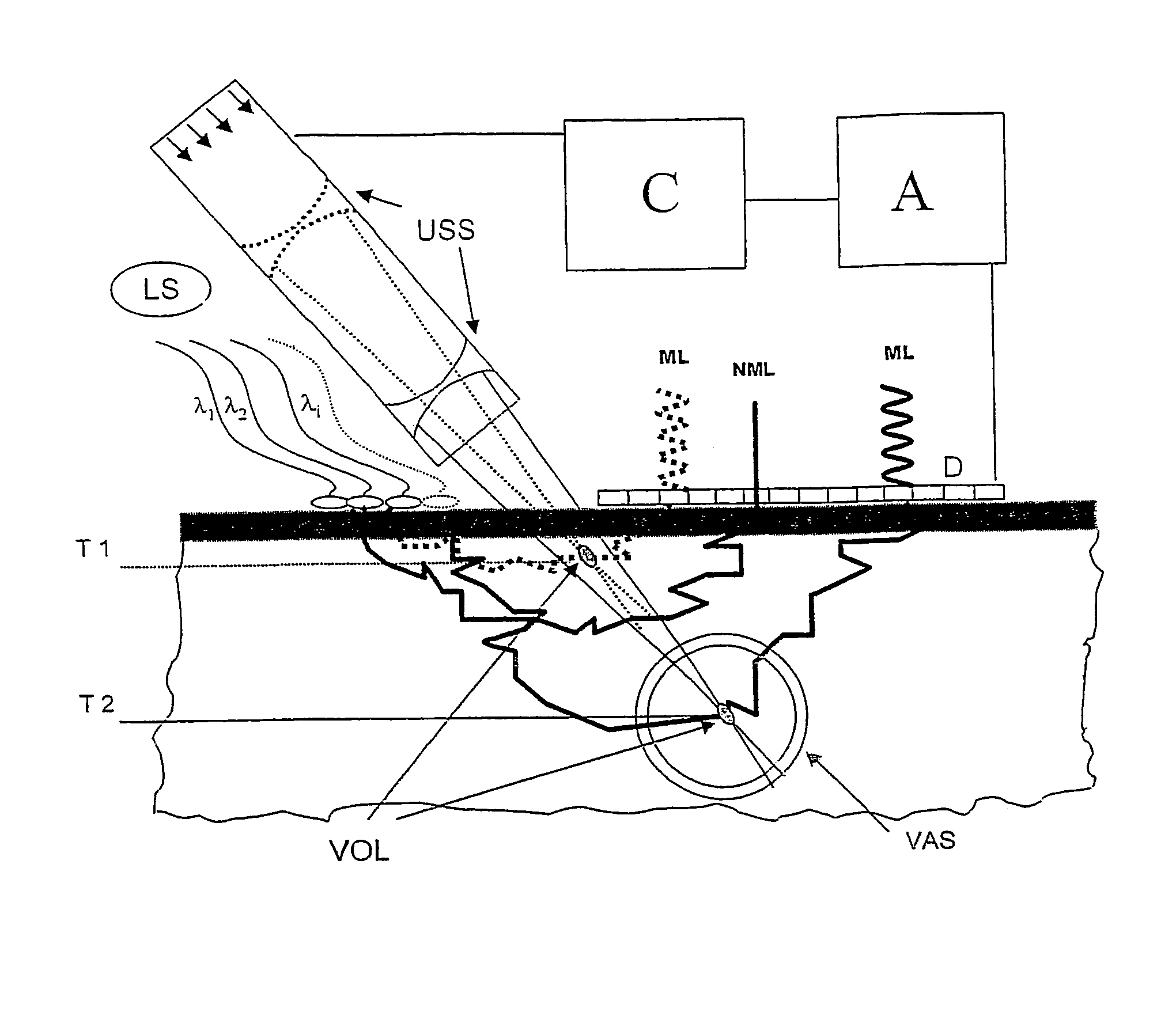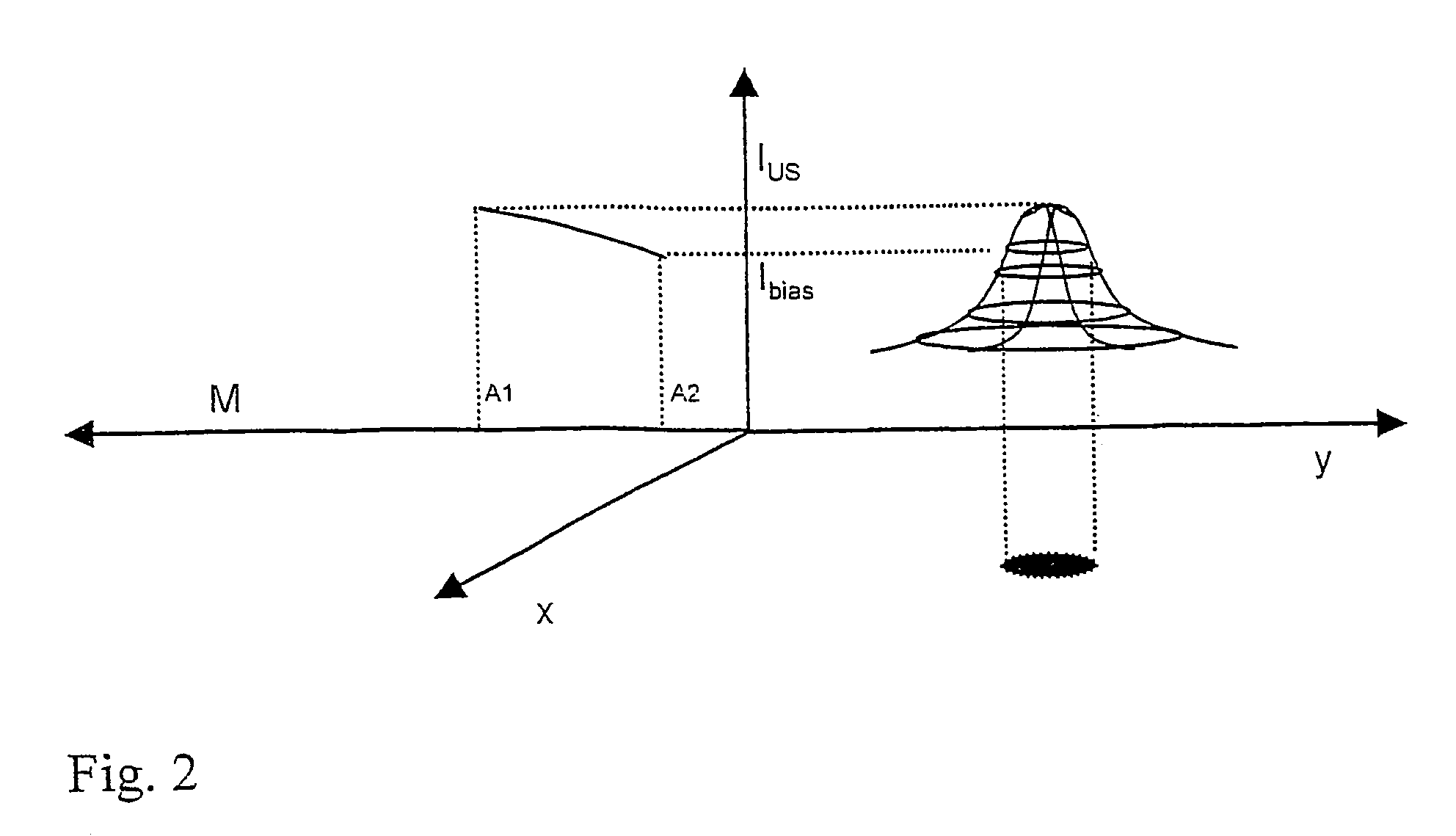Blood optode
a technology of optode and blood, which is applied in the field of medical methods and equipment, can solve the problems of blood examination in large volume, inability to carry out transmission measurement, and association of backscattered light, and achieves the effect of simple detector setup and evaluation
- Summary
- Abstract
- Description
- Claims
- Application Information
AI Technical Summary
Problems solved by technology
Method used
Image
Examples
Embodiment Construction
[0019]In FIG. 1, a light source LS emits light, preferably monochromatic light, with one or more discreet wavelengths, e.g. laser light, into the tissue. The light wavelengths λ1 to λi are chosen in such a way that preferably scattering takes place on selected blood constituents, particularly oxygen-rich and oxygen-poor hemoglobin. A significant component of the irradiated light passes out again at a plurality of exit points following numerous scattering processes. A matrix detector D, which comprises flat, juxtaposed, photosensitive pixels which generates an electric signal proportional to the light intensity, is placed on the skin surface in such a way that the detector covers the exit points adjacent to the irradiation point. The detector dimensions must correspond with the sought light penetration depth (see above), i.e. with the depth of the blood vessel examined. An evaluating unit A connected to the detector summates the detector signals and measures the backscattered light i...
PUM
| Property | Measurement | Unit |
|---|---|---|
| wavelength | aaaaa | aaaaa |
| thicknesses | aaaaa | aaaaa |
| pressure | aaaaa | aaaaa |
Abstract
Description
Claims
Application Information
 Login to View More
Login to View More - R&D
- Intellectual Property
- Life Sciences
- Materials
- Tech Scout
- Unparalleled Data Quality
- Higher Quality Content
- 60% Fewer Hallucinations
Browse by: Latest US Patents, China's latest patents, Technical Efficacy Thesaurus, Application Domain, Technology Topic, Popular Technical Reports.
© 2025 PatSnap. All rights reserved.Legal|Privacy policy|Modern Slavery Act Transparency Statement|Sitemap|About US| Contact US: help@patsnap.com



